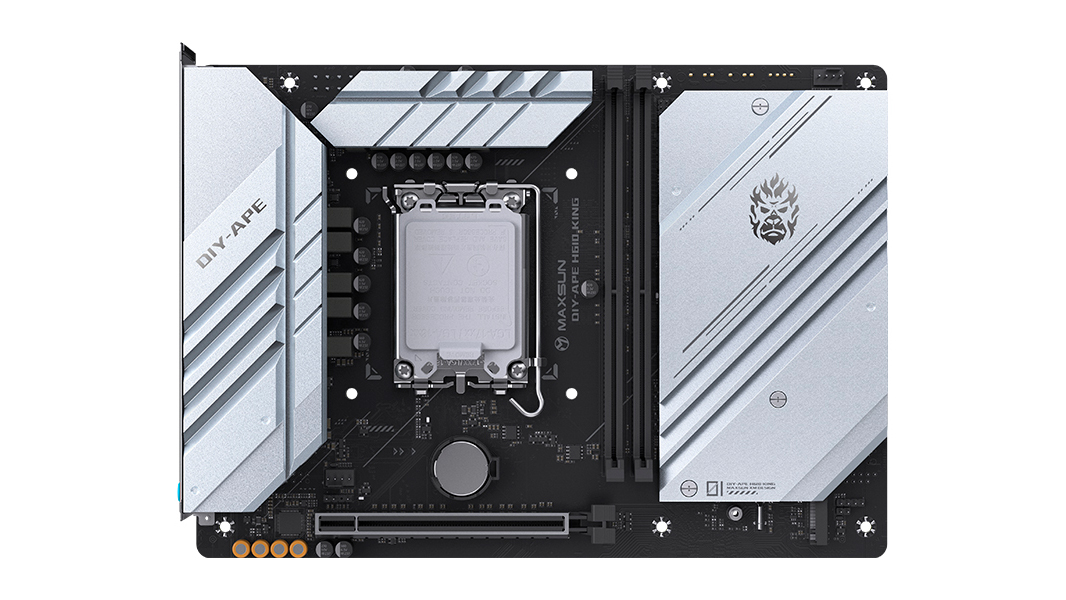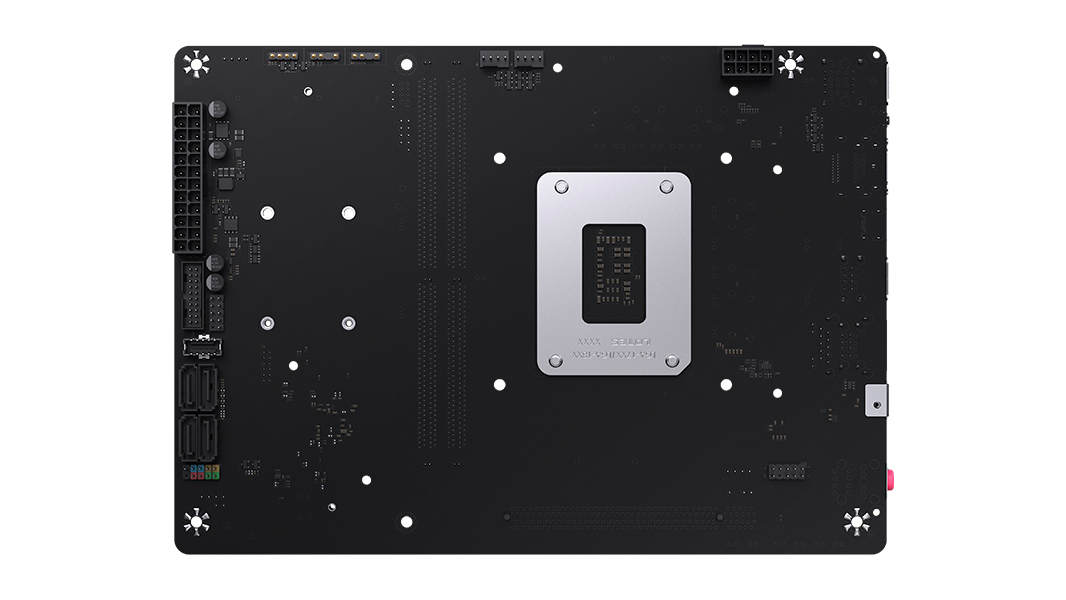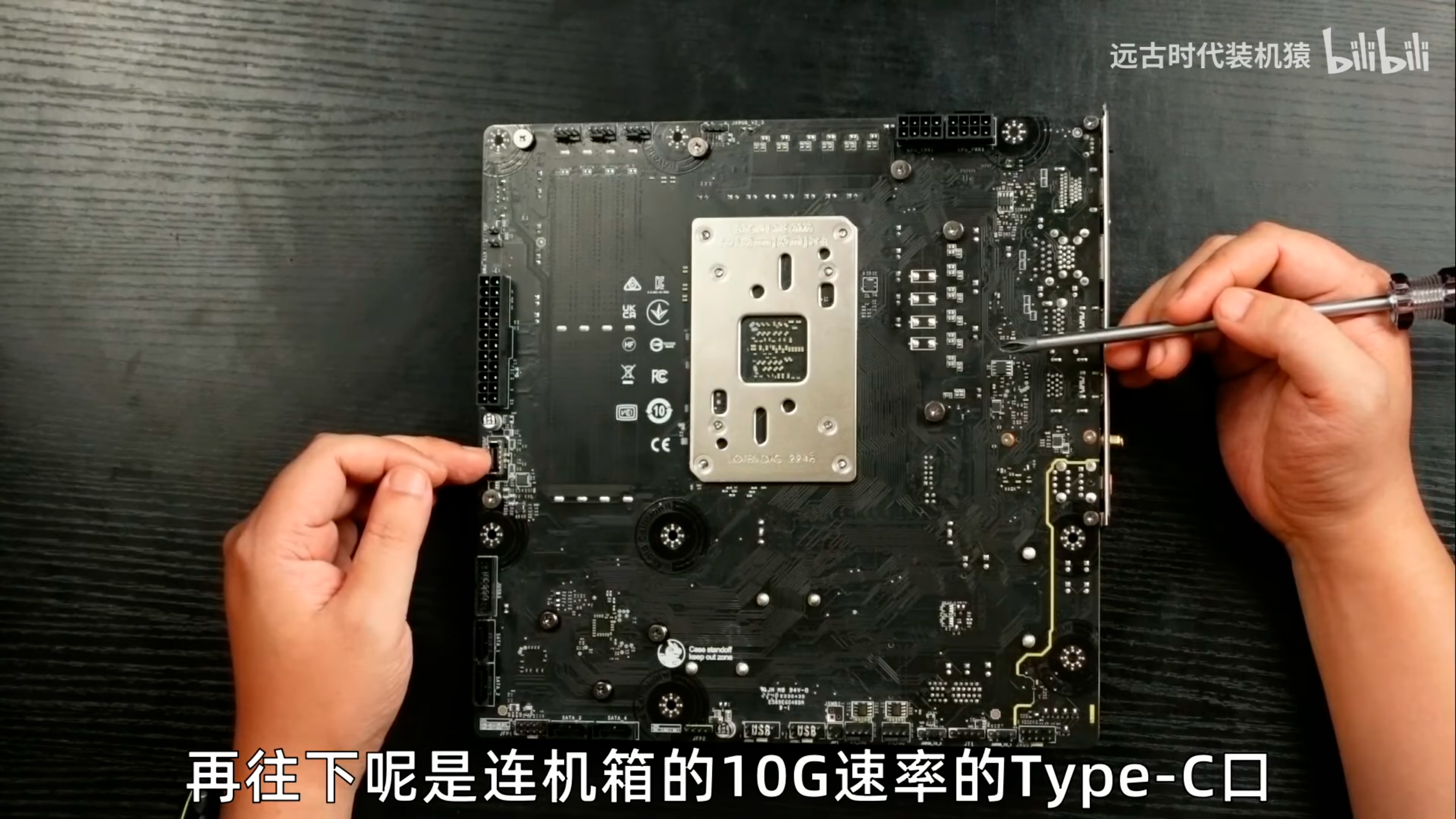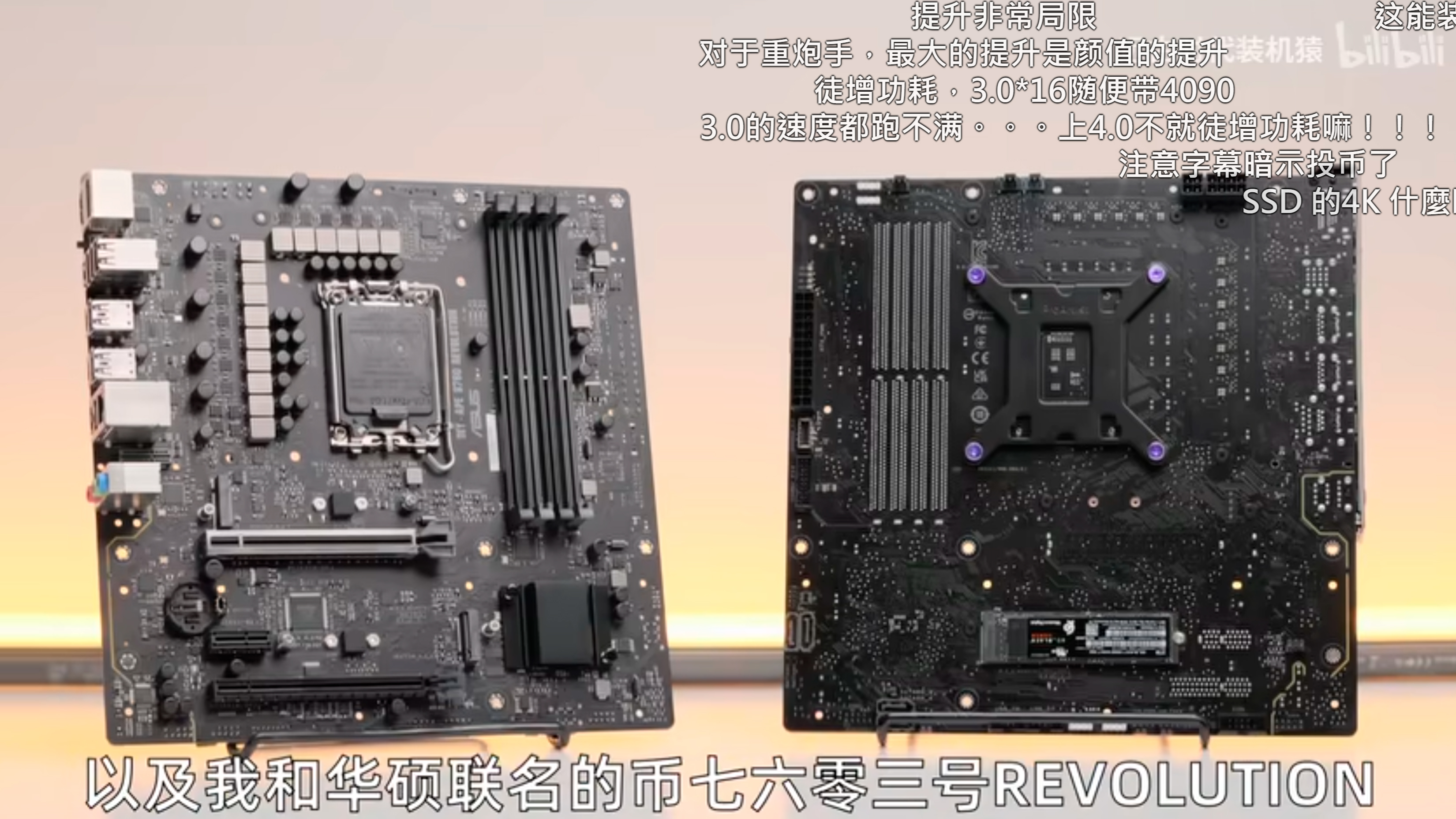MSI, Maxsun Make Back-Connector Motherboards Based on Asus's DIY-APE Standard
The "DIY-APE Revolution," the idea of relocating power, storage, and peripheral connectors to the back of the motherboard, has taken off. We get a sneak peek of the first DIY-APE motherboards from Asus, MSI, and Maxsun.
Asus' DIY-APE movement originated last year. It's a concept similar to Gigabyte's Project Stealth and MSI's Project Zero, which essentially moves motherboard connections to the back so DIY users can hide all the cables behind the case.
While Project Stealth and Project Zero are proprietary projects, Asus appears to have opened DIY-APE to other hardware brands, even rival motherboard vendors. Due to the position of the connections, you can't just mount DIY-APE motherboards to a conventional case, which is why case brands, such as Lian Li, Cooler Master, Cougar, Phanteks, Jonsbo, and Sama have jumped on board the DIY-APE train.
One DIY-APE motherboard, the DIY-APE H610 King from Maxsun has just been unboxed by Chinese tech journalist Ancient Ape Official (we think that's how you translate it) in a video on Bilibili. The DIY-APE H610 King ships in an unorthodox form factor. The brand lists the motherboard with a new "YTX" design, which doesn't adhere to any official motherboard form factors.
At first sight, it looks like a standard ATX motherboard sliced in half. The DIY-APE H610 King measures 245 x 175mm, so the closest form factor to Maxsun's motherboard is Mini-DTX (203 x 170mm). The motherboard features the H610 chipset, supporting both 13th Generation Raptor Lake and 12th Generation Alder Lake processors. Maxsun's motherboard supports processors with a TDP of up to 130W.



The DIY-APE H610 King is as clean as motherboards come. The connections, which include the 24-pin power connector, 8-pin EPS connector, SATA ports, fan headers, RGB headers, and USB headers, are on the rear side of the motherboard. The only header on the front of the motherboard is a fan header, which should correspond to the CPU_FAN header for connecting your cooling solution.
The motherboard's other attributes align with what you expect from an H610 offering. You receive two DDR4 memory slots, two PCIe 3.0 x4 M.2 slots (22110 + 2280), and a slot for CNVi WiFi cards. There's only one PCIe 4.0 x16 expansion slot, but tons of connectivity options, including four USB 2.0 ports, one USB Type-C port, four USB 3.2 ports, one DisplayPort output, one HDMI port, an Ethernet port, and three 3.5mm audio connectors.
Get Tom's Hardware's best news and in-depth reviews, straight to your inbox.



On Ancient Ape Official's YouTube channel he has also tested out MSI's B650M APE WiFi motherboard for Ryzen 7000 processors. It's strange to find an MSI-branded APE motherboard, considering that the company has its own Project Zero. Nevertheless, the B650M APE WiFi has all the aesthetics of an MSI motherboard. However, it doesn't sport any MSI logos, only the DIY APE marketing.
Unlike Maxsun, MSI stuck with the microATX form factor. The motherboard delivers four DDR5 memory slots, one PCIe 4.0 x16 slot, one PCIe 3.0 x1 slot, and two PCIe 4.0 x4 M.2 slots. As you would expect, all the headers and ports on the B650M APE WiFi are on the back of the motherboard.
The reviewer recently looked at Asus' latest DIY-APE B760 Revolution, the direct replacement to the DIY-APE B660 Revolution. The motherboard checks in with four DDR4 memory slots, one PCIe 5.0 x16 expansion slot complemented with a PCIe 4.0 x16 expansion slot at x4, and up to four PCIe 4.0 x4 M.2 slots for high-speed storage.
A quick search on Asus' website also showed support pages for another DIY-APE motherboard, the DIY-APE B660 Pro Max Plus OC. There could be more DIY-APE models in the works, though. Unfortunately, it's unknown if DIY-APE motherboards will make it to the U.S. market. All the reviews and previews so far are from China.

Zhiye Liu is a news editor, memory reviewer, and SSD tester at Tom’s Hardware. Although he loves everything that’s hardware, he has a soft spot for CPUs, GPUs, and RAM.